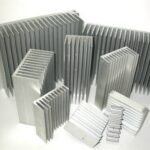Identification of Textile Fibers
There are different methods are used for identification of fibers:
There are
- Non– technical Test: a) Feeling test b) Burning test
In this test there is no requiring any special equipment or chemicals.
- Technical Test :
- Microscope test
- Density Measurement test
- Staining Test
- Chemical Test
Feeling test: Different fibers shows different behavior when you will place on your hand.
1) Cotton: – Cool to touch, feel soft and inelastic.
2) Linen: – Cool to touch, feels smooth and lathery.
3) Jute: – Cool to touch, feels smooth and leathery.
4) Silk: – Warm to touch, feels elastic and smooth.
5) Wool: – Warm to touch, feels elastic and springy.
6) Rayon: – Cool to touch, feels smooth, inelastic and lustrous.
7) Acetate Rayon: – Warm to touch, feels smoother more elastic and resilient then rayon.
8) Nylon: – Feels very smooth, light weight elastic and lustrous.
9) Polyester:-Feels very smooth and stiffer.
10) Acrylic: – Feels of wool, but light weight and slippery feeling.
Burning test:
1) Cellulosic Fiber (Cotton/Jute): Burns with little ash and yellow flame, smale similar to that of burned paper.
2) Protein Fiber (Silk and Wool): Burns slowly with slight sizzle and ceases flaming. The ash is dark and crisp and can be crushed easily with fingers. The smale is like burning of feathers or human hair.
3) Nylon or Polyester fiber:Burns slowly with melting. The ash is brittle and hard black bead will be formed.
4) Acrylic fiber:The sample fuses and shrink away from flame, melts then burns vigorously leaving a hard, dark briffle residue.
Chemical test: The fiber cab is placed in a chemical, at a particular temperature and the solubility will confirm the type of fiber.
- Wool and Silk :- sodium hypochlorite ( 5% chlorine, 25*c)
- Silk :- cold 70% sulphuric acid
- Cellulosic Fiber :- 75% sulphuric acid at 25*c
- Viscose Fiber :- sodium zincates
- Acetate, Triacetate Rayon: – acetic acid/25*c or cold acetone.
- Nylon 6 and nylon 66:- Hcl at 25*c or formic acid at 25* c.
- Acrylic: – DMF at cold/ ammonium thiocyante (70% at boil).
- Only Nylon6 :- DMF at boil
- Polyester: – METACRESOL AT 95*C / CHLORO-PHENOL AT BOIL.
- Polypropylene :- Meta xylene at boil.


